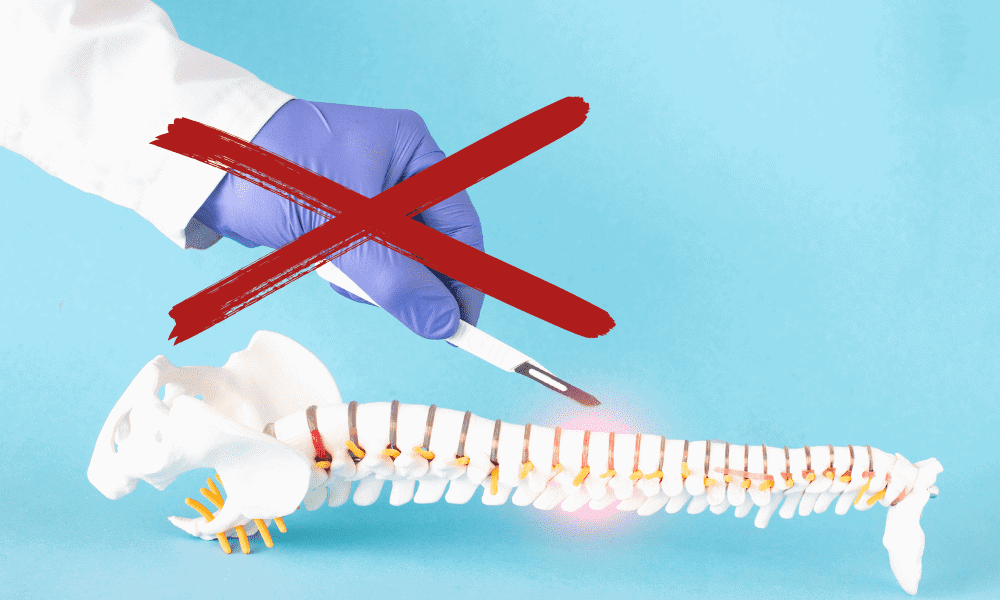Understanding and Managing Back Pain with Effective Treatments for Disc Desiccation
Introduction
In the realm of spinal health, disc desiccation is a term that often surfaces. But what does it really mean? In this comprehensive article, we will delve into the intricacies of disc desiccation, exploring its causes, symptoms, diagnosis, treatment options, and preventive measures. Whether you are a healthcare professional or an individual seeking to understand this condition better, this article aims to provide you with valuable insights into disc desiccation.
Understanding Disc Desiccation
The Anatomy of the Spinal Discs
To comprehend disc desiccation, we must first understand the structure of the spinal discs. The human spine consists of a series of vertebrae, separated and cushioned by intervertebral discs. These discs act as shock absorbers, allowing flexibility and facilitating movements of the spine. Each disc comprises two main components:
The annulus fibrosus: This is the tough, outer ring of the disc, composed of concentric layers of fibrocartilage. It encloses the softer inner core.
The nucleus pulposus: This gel-like substance lies within the annulus fibrosus and provides elasticity and flexibility to the disc.
Defining Disc Desiccation
Disc desiccation refers to the degeneration or drying out of the intervertebral discs. As we age, the spinal discs lose moisture and essential nutrients, leading to structural changes within the discs. These changes can impact the functionality and integrity of the discs, causing discomfort and pain. Disc desiccation is commonly associated with disc degeneration and is often seen as an early stage of more severe spinal conditions, such as herniated discs.
Causes of Disc Desiccation
Age-related Degeneration
One of the primary causes of disc desiccation is the natural aging process. As we grow older, the spinal discs gradually lose their water content, leading to dehydration and subsequent degeneration. The reduction in moisture makes the discs less resilient, resulting in decreased shock absorption and flexibility. Moreover, age-related degeneration can cause the discs to flatten and bulge, leading to the narrowing of the disc space.
Repetitive Strain and Poor Posture
Improper posture and repetitive strain on the spine can contribute to disc desiccation . Prolonged sitting or standing in incorrect positions, heavy lifting, and repetitive bending or twisting motions can place excessive stress on the spinal discs. This prolonged stress can accelerate disc degeneration and lead to desiccation over time. Therefore, it is crucial to maintain proper ergonomics and body mechanics to reduce the risk of disc-related issues.
Trauma and Injuries
Disc desiccation can also occur as a result of spinal trauma or injuries. High-impact accidents, falls, or sports-related injuries can damage the spinal discs, disrupting their structure and function. Traumatic events can cause tears or cracks in the annulus fibrosus, allowing the inner nucleus pulposus to leak or protrude, leading to disc herniation. The subsequent inflammation and degeneration can contribute to disc desiccation.
Signs and Symptoms
Intermittent or Persistent Back Pain
One of the hallmark symptoms of disc desiccation is back pain. Individuals with this condition often experience intermittent or persistent pain in the affected area. The pain may be localized to the lower back or radiate down the legs, depending on the extent of disc degeneration and nerve involvement. The intensity of the pain can vary from mild discomfort to severe, debilitating episodes.
Reduced Range of Motion
Disc desiccation can also manifest as reduced range of motion in the spine. Stiffness and decreased flexibility are common complaints among individuals with this condition. Tasks that require bending, twisting, or lifting may become challenging and painful. The loss of mobility can significantly impact daily activities and reduce overall quality of life.
Numbness, Tingling, and Weakness
In some cases, disc desiccation can compress nearby nerves, leading to symptoms such as numbness, tingling, and weakness. This occurs when the degenerated disc bulges or herniates, exerting pressure on the spinal nerves. The affected individuals may experience these sensations in the back, buttocks, legs, or feet, depending on the location of the affected disc. It is important to seek medical attention promptly if these symptoms arise.
Diagnosing Disc Desiccation
Medical History and Physical Examination
When evaluating a patient for disc desiccation, healthcare professionals typically begin by gathering a detailed medical history. This includes information about the patient’s symptoms, previous injuries, and any relevant familial or medical conditions. Following the medical history, a thorough physical examination is conducted to assess the patient’s range of motion, reflexes, and neurological function.
Imaging Tests: X-rays, MRI, and CT scans
To confirm the presence of disc desiccation and assess its severity, imaging tests are often necessary. X-rays provide a basic overview of the spinal structure and can help identify any abnormalities, such as narrowed disc spaces. Magnetic Resonance Imaging (MRI) scans offer more detailed images of the spinal discs, showing signs of degeneration and herniation. In certain cases, Computed Tomography (CT) scans may be used to obtain cross-sectional images for a more precise evaluation.
Diagnostic Injections
In some instances, diagnostic injections may be utilized to pinpoint the source of pain and confirm the diagnosis of disc desiccation. These injections involve the administration of a local anesthetic or a contrast agent into the suspected disc or adjacent structures. By observing the patient’s response to the injection, healthcare professionals can determine if the disc is the source of pain and plan appropriate treatment strategies accordingly.
Treatment Options – Non-Surgical Approaches
Pain Management Techniques
In many cases, non-surgical approaches are the first line of treatment for disc desiccation. Pain management techniques aim to alleviate discomfort and improve the patient’s quality of life. These may include:
Medications: Non-steroidal anti-inflammatory drugs (NSAIDs), muscle relaxants, and pain relievers can help reduce pain and inflammation.
Physical Therapy: Targeted exercises, stretches, and manual therapy techniques can strengthen the surrounding muscles, improve posture, and enhance flexibility.
Heat and Cold Therapy: Applying heat or cold packs to the affected area can provide temporary relief from pain and reduce inflammation.
Transcutaneous Electrical Nerve Stimulation (TENS): This technique involves the use of low-voltage electrical currents to stimulate the nerves and alleviate pain.
Pain Relief Patches: Applying a prescription lidocaine patch is a safe and effective way to relieve localized pain. For more information on pain patches please visit our page dedicated to this subject: Prescription Lidocaine Patches for Pain Relief
Treatment Options – Physical Therapy and Rehabilitation
Physical therapy plays a crucial role in the treatment of disc desiccation. A skilled physical therapist can design a tailored exercise program to strengthen the core muscles, improve spinal stability, and promote proper body mechanics. Additionally, they may incorporate modalities such as ultrasound or traction to further aid in pain relief and enhance tissue healing.
Lifestyle Modifications
Certain lifestyle modifications can significantly contribute to managing disc desiccation and preventing its progression. These include:
Maintaining a Healthy Weight: Excess weight places additional strain on the spinal discs, exacerbating degeneration. Adopting a balanced diet and engaging in regular physical activity can help achieve and maintain a healthy weight, reducing the burden on the spine.
Ergonomic Adjustments: Ensuring proper ergonomics in the workplace and at home can help minimize stress on the spine. Using supportive chairs, maintaining good posture, and taking frequent breaks during prolonged sitting can make a significant difference.
Avoiding Smoking: Smoking negatively impacts spinal health by reducing blood flow to the spinal discs, impairing their ability to receive essential nutrients and heal. Quitting smoking can contribute to overall spinal health and enhance the effectiveness of treatment approaches.
Treatment Options – Minimally Invasive Interventions
For those suffering from severe back pain due to disc desiccation in their spine, minimally invasive treatments such as the Discseel® Procedure, biacuplasty and epidural steroid injections may be recommended.
Epidural Steroid Injections:
For individuals experiencing severe pain and inflammation, Epidural steroid injections involve the injection of corticosteroid medication into the epidural space around the affected disc. These medications help to reduce inflammation, thereby reducing pain and restoring mobility. In some cases, multiple treatments may be necessary in order to achieve optimal results. Visit our Epidural Steroid Injections procedure web page for more information.
The Discseel® Procedure:
The Discseel® Procedure involves a minimally invasive injection of a proprietary blend of medical-grade adhesive which forms a bond with the surrounding tissue, repairing damaged discs and preventing the leakage of their contents. Over time, the adhesive is replaced by healthy tissue, restoring the disc to its normal function. Visit our Discseel® procedure web page for more information.
Dr. Wiederholz is a pioneer in the field of minimally invasive spine treatments in Houston, having been personally trained by the inventor of the Discseel® Procedure, Dr. Kevin Pauza. Since 2020, Dr. Wiederholz has been at the forefront of this innovative treatment, making him the first in Houston to perform the Discseel® Procedure and establishing him as the leading local expert.
The Discseel® Procedure is a revolutionary treatment that offers a non-surgical solution to chronic back and neck pain. As a disciple of Dr. Pauza, Dr. Wiederholz has mastered the technique, providing patients with a safe, effective, and long-lasting relief from their pain.
Choosing Dr. Wiederholz for your Discseel® Procedure means choosing a physician who has trained under the best, and who is dedicated to delivering the highest standard of care. His expertise and commitment to patient wellbeing make him the trusted choice for those seeking to avoid surgery and improve their quality of life.
Intravetebral Disc Biacuplasty:
Intravetebral biacuplasty is a minimally invasive procedure used to treat chronic discogenic low back pain. It involves inserting two, thin heated probes into the affected intervertebral disc, which delivers controlled radiofrequency energy to the nerves causing pain, thereby reducing discomfort, and improving function. Visit our Biacuplasty procedure web page for more information.
Treatment Options – Surgical Interventions
In cases where conservative treatments fail to provide adequate relief or when there is severe disc degeneration, surgical interventions may be considered. The type of surgery recommended depends on various factors, including the patient’s condition, the affected disc level, and the presence of any associated spinal conditions. Common surgical interventions for disc desiccation include:
Discectomy:
Discectomy is a surgical procedure that involves the removal of the damaged or herniated portion of the disc. This procedure aims to alleviate pressure on the nerves and relieve associated symptoms. Discectomy can be performed using different techniques, including traditional open surgery or minimally invasive approaches, such as microdiscectomy. The choice of approach depends on the individual case and the surgeon’s expertise.
Spinal Fusion:
Spinal fusion is a procedure in which two or more vertebrae are permanently fused together using bone grafts or implants. This surgical intervention aims to stabilize the spine and reduce pain by eliminating motion at the affected disc level. Spinal fusion may be recommended in cases where disc desiccation has led to significant instability or when combined with other spinal conditions, such as spinal stenosis or spondylolisthesis.
Artificial Disc Replacement:
In recent years, artificial disc replacement has emerged as an alternative to spinal fusion for select patients. This procedure involves removing the damaged disc and replacing it with an artificial disc implant. Artificial disc replacement aims to preserve motion at the affected disc level while providing stability and relieving symptoms. It is typically recommended for patients with isolated disc degeneration and good spinal alignment.
Preventing Disc Desiccation
While disc desiccation may be an inevitable part of the aging process, certain measures can help minimize the risk and slow down its progression. Incorporating the following preventive strategies into your lifestyle can promote spinal health:
Maintaining Good Posture
Maintaining proper posture is essential for preserving the health of the spinal discs. When sitting or standing, it is important to keep the spine in a neutral alignment, avoiding excessive slouching or arching. Using ergonomic chairs, supportive pillows, and standing desks can help maintain good posture throughout the day.
Regular Exercise and Strengthening
Engaging in regular exercise and strengthening activities is crucial for supporting the spine and reducing the risk of disc desiccation. Exercises that focus on core strength, flexibility, and overall fitness can help stabilize the spine and improve its ability to withstand stress. Activities such as swimming, walking, yoga, and Pilates are excellent choices for maintaining spinal health.
Avoiding Excessive Strain and Impact
To minimize the risk of disc desiccation, it is important to avoid excessive strain and impact on the spine. This includes using proper body mechanics when lifting heavy objects, avoiding repetitive bending or twisting motions, and incorporating rest breaks during activities that involve prolonged sitting or standing. Additionally, using supportive footwear and practicing safe sports techniques can help protect the spine from unnecessary stress.
Frequently Asked Questions (FAQs)
Can disc desiccation be reversed?
Disc desiccation is a degenerative condition that cannot be reversed completely. However, appropriate treatment measures and lifestyle modifications can slow down its progression, alleviate symptoms, and improve the overall quality of life.
Is disc desiccation a common condition?
Disc desiccation is a relatively common condition, especially among older individuals. It is often considered a natural part of the aging process, with varying degrees of severity.
Are there any natural remedies for disc desiccation?
While natural remedies cannot reverse disc desiccation, certain measures can help manage symptoms and support spinal health. These include maintaining a healthy weight, practicing good posture, engaging in regular exercise, and avoiding tobacco use.
Can disc desiccation lead to permanent disability?
In most cases, disc desiccation does not lead to permanent disability. However, if left untreated or if the condition progresses, it can cause significant pain and functional limitations. Early diagnosis and appropriate treatment can help prevent long-term complications.
How long does the recovery process take after surgery?
The recovery process after surgery for disc desiccation varies depending on the specific procedure performed and individual factors. In general, it may take several weeks to a few months to achieve full recovery and return to normal activities. Following the post-operative instructions provided by the surgeon is crucial for a successful recovery.
Can disc desiccation affect other parts of the body?
Disc desiccation can lead to the compression of nearby spinal nerves, which may cause symptoms such as radiating pain, numbness, tingling, or weakness in other parts of the body. The specific symptoms depend on the location of the affected disc.
Conclusion
Disc desiccation is a common condition associated with disc degeneration and can cause significant pain and functional limitations. Understanding its causes, signs, and treatment options is essential for proper management. While disc desiccation cannot be reversed completely, appropriate interventions, including non-surgical approaches and surgical options, can help alleviate symptoms and improve quality of life. Moreover, preventive measures such as maintaining good posture, engaging in regular exercise, and avoiding excessive strain on the spine can help minimize the risk of disc desiccation. If you suspect disc desiccation or are experiencing symptoms, it is important to consult with a healthcare professional for a thorough evaluation and appropriate management.
If you have back pain due to a disc desiccation and would like to explore minimally and non-invasive treatment options, we would be happy to arrange a consultation with Dr. Matthias Wiederholz. He is available for the Discseel® Procedure and other minimally invasive procedures in Houston, Texas and Lawrenceville, New Jersey. Dr Suzanne Manzi is also available for minimally invasive procedures in Houston and League City, Texas. Our team will work with you to create a personalized treatment plan to help you get back to the daily activities you enjoy.

















